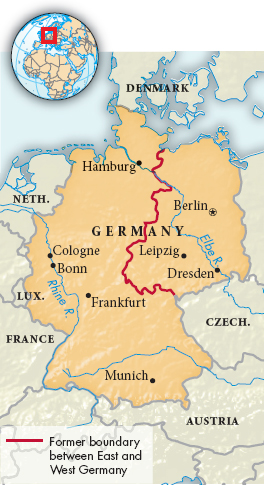German Unification and the End of the Cold War
The dissolution of communism in East Germany that began in 1989 reopened the “German question” and raised the threat of renewed Cold War conflict over Germany. In the end, East Germany was absorbed into an enlarged West Germany. Three factors were particularly important in this outcome. First, in the first week after the Berlin Wall was opened, almost 9 million East Germans — roughly half of the total population — poured across the border into West Germany. Almost all returned to their homes in the east, but the experience aroused long-

Second, West German chancellor Helmut Kohl and his closest advisers skillfully exploited the historic opportunity handed to them. In November 1989, Kohl presented a ten-
Third, in the summer of 1990, the crucial international aspect of German unification was successfully resolved. Unification would once again make Germany the strongest state in central Europe and would directly affect the security of the Soviet Union. But Gorbachev swallowed hard and negotiated the best deal he could. In a historic agreement signed by Gorbachev and Kohl in July 1990, Kohl solemnly affirmed Germany’s peaceful intentions, sweetening the deal by promising enormous loans to the hard-
The peaceful reunification of Germany accelerated the pace of agreements to liquidate the Cold War. In November 1990, delegates from twenty-